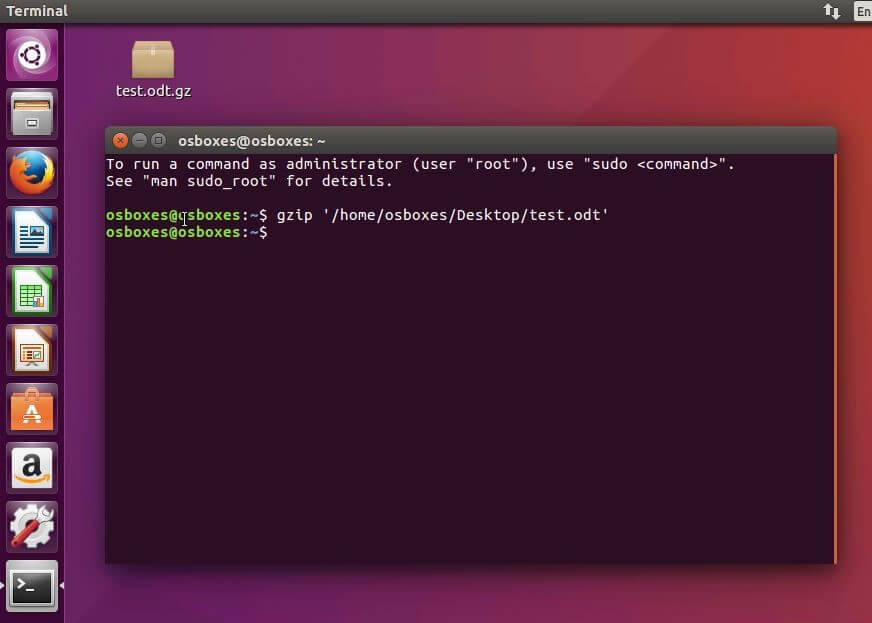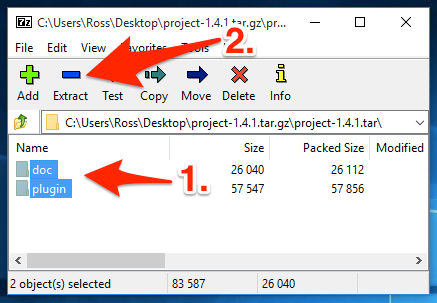

Put into an archive file, or as they are extracted. The -v “verbose” option above lists all the file names as they are The archive file name must immediately follow the -f option with no Happen to own a tape drive! Always use -f and an archive file name. The -f archive pathname option is almost always used, unless you j: the entire archive is bzip2 compressed (or uncompressed if extracting) z: the entire archive is gzip compressed (or uncompressed if extracting) v: verbose (more messages about what is happening, or more detail) You may optionally use some other relevant options: -f: select the archive pathname (almost always used must be last option) c: create a new tar archive (erases existing contents!) x: extract (all or some) pathnames from the archive You must always use one of three major operation letters: -t: list the pathnames in the archive (a table of contents) Other option letters in between: $ tar -tvf my.tar # correct use of -f The archive name must always directly follow the -f option with no There simply for human readers to better know what the files contain. The name of the tar archive can be anything the suffixes are $ tar xvf my.tar mydir # only extract mydir from the archive $ tar -xvf my.tar # extract everything into current dir $ tar -cf stuff.tar *.c # archive all the. Some helpful bz-commands have been created to directly access compressedįiles and save typing bunzip2 in a pipe all the time:īzcat bzdiff bzfgrep bzgrep bzless: $ bunzip2 -f rw-rw-r- 1 idallen idallen 168835 Mar 8 04:05 foo.out 2.1 Helpers: bzless bzfgrep bzcat bzdiff bzgrep Index Writing standard output) if you don’t give it a file name: $ fgrep 'refused connect' /var/log/auth.log | gzip >įoo: bzip2 compressed data, block size = 900kīunzip2: Can't guess original name for foo - using foo.out You can use either command as a filter (reading standard input and rw-rw-r- 1 idallen idallen 168835 Mar 8 04:03 foo 1.1 Using filters (no file names) Index The gunzip command will not uncompress a file by name unless the fileįoo: gzip compressed data, last modified: Wed Mar 6 21:13:03 2019, from Unix The compressed file is removed after being uncompressed. The original file contents and removes the suffix from the name: $ gunzip foo.gz # "gunzip foo" works tooĩ6 -rw-r-r- 1 idallen idallen 97450 Feb 10 13:08 foo You can decompress/uncompress the file with gunzip, which restores

The original file is removed after being compressed.

gz suffix added on the end: $ cp -p /etc/passwd fooĩ6 -rw-r-r- 1 root root 97450 Feb 10 13:08 /etc/passwdĢ8 -rw-r-r- 1 idallen idallen 26884 Feb 10 13:08 foo.gzįoo.gz: gzip compressed data, was "foo", from Unix, last modified: Wed Feb 10 13:08:27 2016 You can compress a file using the gzip command, and the result is a 7 Handling Unix/Linux archives and compressed files under Microsoft Windowsġ File compression: gzip and gunzip Index.3.2.1 Legacy: Using tar to copy a directory.3.2 Using tar to archive or restore a directory.2.1 Helpers: bzless bzfgrep bzcat bzdiff bzgrep.1.2 Helpers: zless zfgrep zcat zdiff zgrep.Allen – – Winter 2019 - January to April 2019 - Updated 04:21 EST Useful programs: gzip,bzip2 - compression tar,zip - file archiving diff - comparison Useful programs: gzip,bzip2 - compression tar,zip - file archiving diff - comparison


 0 kommentar(er)
0 kommentar(er)
